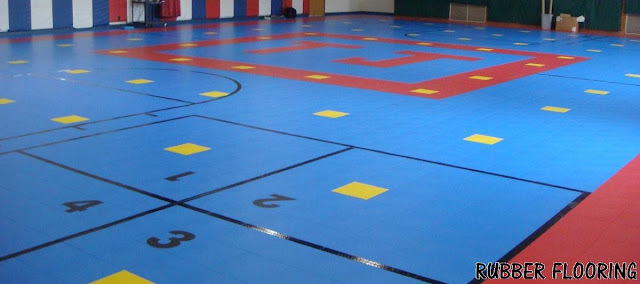Gymnasium Flooring: The Foundation of Athletic Excellence
Introduction:
Gymnasium flooring is the bedrock upon which athletes' performances are built. It is more than just a surface; it's an essential component that influences the safety, performance, and overall experience of athletes in any sports facility. From hardwood to rubber, gym flooring comes in various materials, each designed to meet specific needs and demands. In this exploration, we delve into the importance of gymnasium flooring, its different types, and how it contributes to the success of athletes and fitness enthusiasts alike.
Importance of Gymnasium Flooring:
The significance of gymnasium flooring cannot be overstated. It provides athletes with a stable, supportive surface that reduces the risk of injuries during training and competitions. Whether it's basketball, volleyball, or weightlifting, the right flooring absorbs impact, minimizes strain on joints, and enhances performance. Moreover, gym flooring contributes to the overall aesthetics and ambiance of the space, creating an environment conducive to focus and motivation.
Types of Gymnasium Flooring:
1. Hardwood Flooring:
- Hardwood flooring, typically made of maple, is a classic choice for gymnasiums. It offers excellent shock absorption, uniform ball bounce, and a smooth surface ideal for activities like basketball and volleyball. Hardwood floors are durable, elegant, and provide athletes with the necessary traction to make quick cuts and movements.
2. Rubber Flooring:
- Rubber flooring is versatile and suitable for various athletic activities. It provides exceptional impact resistance, making it ideal for high-traffic areas and intense workouts. Rubber flooring comes in different thicknesses and textures, catering to specific needs such as shock absorption, sound insulation, and slip resistance. It's commonly used in weight rooms, aerobics studios, and multipurpose gymnasiums.
3. Synthetic Flooring:
- Synthetic flooring, such as polyurethane and vinyl, offers durability, resilience, and customization options. These materials are often used in indoor tracks, dance studios, and fitness centers. Synthetic floors provide a comfortable surface for activities like yoga and dance while maintaining traction and stability.
4. Carpeted Flooring:
- Carpeted flooring adds warmth and comfort to gymnasiums, making it suitable for activities like gymnastics, stretching, and rehabilitation exercises. Carpet tiles with cushioned backing offer shock absorption and noise reduction benefits, enhancing the overall experience for users.
5. Interlocking Tiles:
- Interlocking tiles provide a cost-effective and convenient solution for gym flooring. Made of materials like foam or rubber, these tiles are easy to install, replace, and maintain. They offer shock absorption, insulation, and customization options, making them suitable for home gyms, play areas, and temporary event spaces.
Conclusion:
In conclusion, gymnasium flooring is an integral aspect of any sports facility or fitness center. It not only ensures the safety and well-being of athletes but also contributes to their performance and enjoyment. Whether it's the classic appeal of hardwood, the versatility of rubber, or the comfort of carpet, choosing the right flooring is crucial for creating an environment conducive to athletic excellence. By understanding the different types of gymnasium flooring and their benefits, facility managers can make informed decisions that enhance the overall experience for athletes and enthusiasts alike.



Comments
Post a Comment